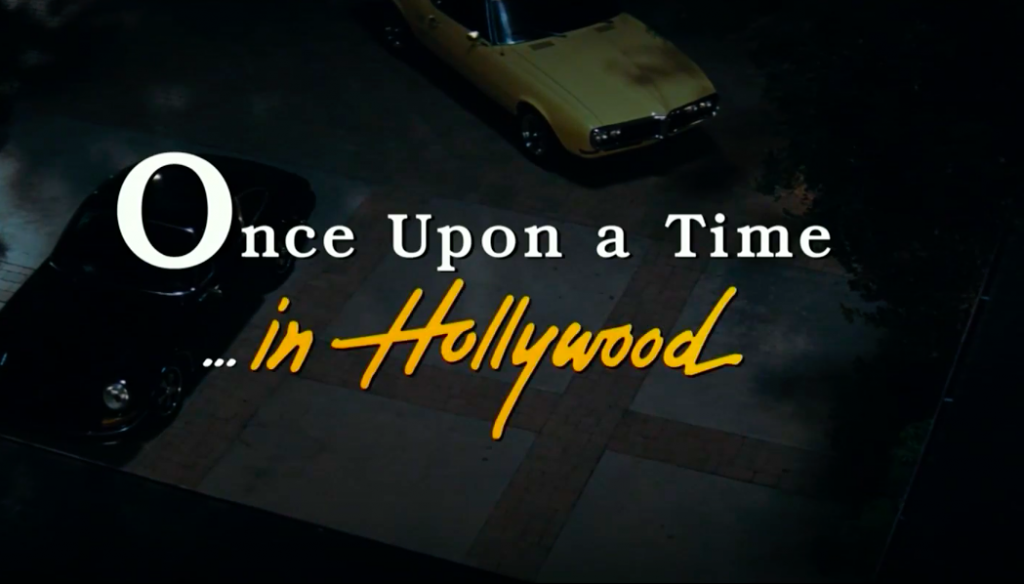
Quentin Tarantino’s ninth feature film is wistfully reminiscent of a bygone era, a self-reflexive artefact devoted to the zeitgeist of the closing chapter of Hollywood’s golden era. For two hours and forty minutes, the director lays bare his musings on cinema which read less like a narrative and more like a very thorough character study of evanescing actor Rick Dalton (DiCaprio) – who desperately clings to his waning status as a Hollywood star – and his stuntman, loyal buddy-for-hire, and war veteran Cliff Booth (Pitt). Rick lives next door to Sharon Tate (Margot Robbie) and Roman Polanski (Rafal Zawierucha), who are among several real figures implanted into the film. Another, lurking in Tarantino’s quietly escalating subplot, is a very convincing Charles Manson (Damon Herriman). Once Upon a Time culminates with the Manson cult invading Rick’s home, while he lies drunkenly on a lilo, and Cliff curiously licks a tin of dog food, having just smoked an acid-laced cigarette. Luckily for the inebriated protagonists – indeed for the Polanski’s next-door – Cliff’s dog Brandy is on hand to maul the intruders half to death. Cliff mostly finishes the job, sparing only Sadie – who is unhesitatingly torched to a crisp by Rick Dalton with the flamethrower he keeps in his shed. Tarantino’s trademark violence seems, until this point, to have been side-lined, but this serves only to disarm the spectator, before unleashing in full force a cinematic vengeance fifty years in the making.
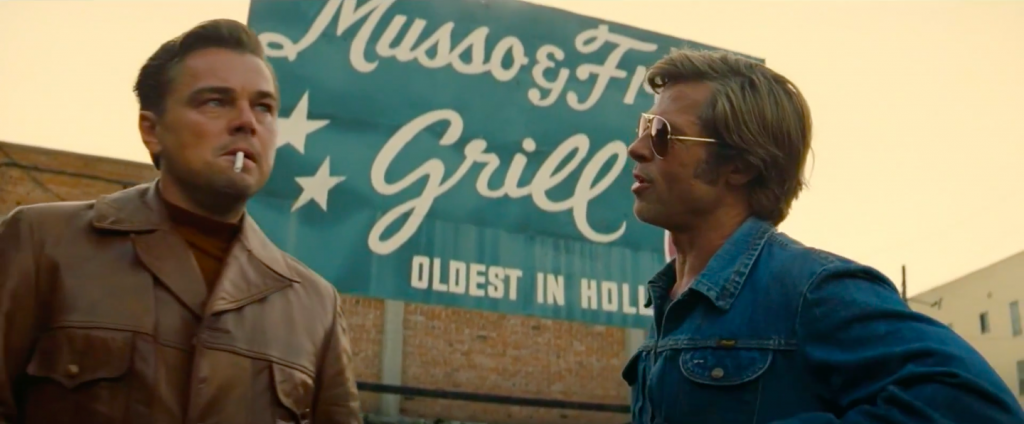
A romanticised blend of history and fantasy, Tarantino offers all the nostalgia of the sixties – from vintage cigarette commercials to real 16mm Super 8 footage – without the unhappy endings. And yet, while he yearns for days gone, the darker side of the decade – the Vietnam war, the activism it inspired or, darker still, the Manson cult – is not ignored, and his protagonists remind us that Hollywood was rife with suspect characters. Rick is a fame-hungry actor, Cliff a suspected wife-murderer, and the rest are predominantly cult members. Amidst them all, one character emerges as the straight arrow, the unquestionably moral, redeeming hero: Brandy, the well-behaved, loyal pit bull terrier of Cliff Booth, played by canine stars Sayuri, Cerberus, and Siren. Throughout the film, Brandy is treated not just as a dog but as one of the central characters, and her involvement in the narrative proves crucial.

As spectators, Brandy very quickly wins our affections, and this is largely down to Tarantino’s effective cinematography which heavily anthropomorphises Cliff’s loyal friend. We first meet Brandy when Cliff returns home to his trailer. Cliff opens a tin of dog food for his excited companion, and Tarantino cuts to an extreme close up of Sayuri, who licks her lips, seemingly in anticipation. A succession of stylish close ups shows Cliff opening the tin, a horrid gelatinous mass sliding out and splatting into Brandy’s bowl. Tarantino again cuts to a close-up of Brandy, who whimpers. The match-on-action ploy here creates the sense that she is a little repulsed by the food. Cutting back to a mid-shot of Cliff from the point of view of Brandy, Tarantino aligns the spectator with her perspective, as Cliff tells her “if you whine you don’t eat”. Brandy is shown once more in close-up, who sniffs as though heeding his warnings. Cliff asks her if she understands, and Tarantino cuts back to Brandy who barks in response.
The exchange between man and animal here plays out exactly as would a dialogue between two human characters, using shot-reverse shot cutting and maintaining 180-degree continuity editing. The implication here is that Brandy is engaging in a conversation with Cliff and responding to her owner with expressive emotion. Cliff does not talk at Brandy but rather negotiates with her. Brandy won the Wamiz Palm Dog award for her performance, and Tarantino, who accepted on her behalf, told the audience that “when I was editing the movie I realised, she’s a great actress. I actually started seeing things in her face when I was cutting it together”[1]. This illusion of animal ‘acting’ is the advantage of the formal aspects of film – to connect Brandy’s trained responses to Cliff’s conversing, interweaving isolated shots through continuity editing to suggest they are taking place in real time. Indeed, Murray Pomerance notes that, despite what cinema may convince us, animals in film “behave rather than perform. It is through editing, shot selection, and narrative technique that the animal behaviour is transformed into a screen performance”[2]. Brandy is not answering back to her owner, neither is she expressing emotion in the way that the persistent close ups would have us imagine. I certainly do not intend to discredit the three fabulous Pit Bulls that played Brandy, or their hard-working trainers, rather to evidence Tarantino’s use of filmmaking to mask trained responses as acting. Tarantino elevates Brandy far above her status as an animal through cinematic manipulation, humanising her and creating the illusion of conscious performance.

Despite any kind of self-aware acting being only fantasy, studies of animality in film still tend to consider ‘performances’ as highly stylised and meaningful. Adrienne L. McLean, for example, argues that “dogs are no more and no less than components of mise-en-scène. As such they can be analysed through their facial expressiveness […] relation to and interaction with setting and props, as well as other actors”[3]. To engage in the act of watching film is to submit to the suspension of disbelief, thus we may still examine Brandy as if she is acting. As a highly expressive, humanised companion, then, Brandy’s role in the film – besides her explicit duty as Cliff’s best friend and her inclusion in the final showdown – is to also humanise Cliff. The stuntman is affable enough and loyal to his buddy Rick – but he is hardy a saint. Some way into the film, Tarantino nonchalantly lets slip that Cliff may have killed his wife while out sailing. Further, we see Cliff beat up an arrogant, caricatured rendition of Bruce Lee (Mike Moh). Spectators may find it harder to overlook these details should Cliff not be such an excellent, compassionate dog owner. The bond between the two is evidenced when Brandy attacks Cliff with affection upon him entering his trailer. More stylistically, however, Tarantino uses cinematic doubling to emphasise the relationship between the pair. In the above clip, the close-up montage of Cliff preparing his own dinner is interspersed with footage of him also preparing Brandy’s. A close up of Cliff fetching a tin of beer from the fridge is mirrored by him reaching for a tin of ‘Wolf’s Tooth Raccoon Flavour’ dog food for Brandy; a close up of macaroni boiling on the stove is paralleled in a shot of the unappealing sludge landing in Brandy’s dog bowl. Tarantino displays Cliff and Brandy as intrinsically linked, inseparable, and equal.
Further suggestive of this bond is Tarantino’s use of match-on-action shots to tether Cliff’s commands with Brandy’s sharp responses, suggestive of his competence as a trainer and her obedience. Brandy’s training appears throughout the film – the same shot coupling displays her performing typical actions such as sitting, staying, waiting to eat, or moving to a desired location. Most notably, however, her training proves pivotal in the climax of the film. While cultist Tex (Austin Butler) holds Cliff at gunpoint, Tarantino cuts to a full body shot of Brandy who begins to advance to the threat. We see Cliff’s hand discretely lower, an indication for her to hold her attack. Tex cocks his gun to fire, but Cliff, framed in a close up, clicks his tongue, a diegetic signal not only for Brandy but one that Tarantino has by now ingrained in the spectator too. We know precisely what will follow; Tarantino cuts to a low angle shot of Brandy who, growling menacingly, pounces on the intruder. Brandy’s loyalty to Cliff – her willingness to defend his life – is unquestionable, and in her affections for her owner the spectator surely recognises Cliff’s patience, understanding, and adoration for his loyal Pit Bull. The implied relationship between Cliff and Brandy allows us to forgive him for his underlying callousness – rendering his character far more likeable – since audiences generally seem concerned far more with the treatment of animals in film than of human actors. This is perhaps no better evidenced than by Tarantino himself, who in this interview with American Humane, with whom the director consulted for Django Unchained (2012)[4], explains that “animals aren’t supposed to get hurt, animals aren’t supposed to die”[5].
Perhaps this is because mistreatment of animals feels more real. We know, when Cliff bashes the face of Manson cult member Kate (Madisen Beaty) against seemingly every surface in sight that this violence is simulated. But when Tex hits Brandy in the head, we recoil. Brandy shows us throughout Once Upon a Time that Cliff is a good dog owner, and this contributes largely to his characterisation, even going some way to atoning for his past crimes.
Despite Brandy’s portrayal, her heightened agency and her role in decorating Cliff’s character, it is important for audiences to remain mindful of the power of the filmic medium; Tarantino paints Brandy in a very specific light, showing her exactly as he wants her to be seen. Where he falls short in his depiction of the Pit Bull on screen is in his failure to acknowledge the cultural stigma – surrounding exploitation, selective breeding and aggressiveness – attached to Brandy’s breed. In Animals in Film, Jonathan Burt argues that “the animal image can so readily point beyond its significance on screen to questions about its general treatment or fate in terms of welfare”, suggesting that “the boundaries of film art . . . cannot easily delimit the meaning of the animal within its fictions”[6]. Certainly, it impossible in casting Brandy, a clipped-eared Pit Bull terrier, to not also have her function as a referent to her real-world connotations. Aggressive demonisation of Pit Bull breeds, perpetuated through media coverage, has been upheld in the public eye for some time. Chiefly, Breed-Specific Legislation (BSL) in the United States bans the breed in selected states[7], while in the United Kingdom, Pit Bulls are prohibited for purchase under the Dangerous Dogs Act of 1991 and face higher chance of euthanasia than other breeds[8]. At face value, Tarantino, in the epically violent denouement of Once Upon a Time, shows a Pit Bull reared to kill and thus animality in its truest sense. The film capitalises on the breed’s supposed aggressiveness for a visually satisfying conclusion and has faced backlash from the likes of PETA for its regressive representation[9].
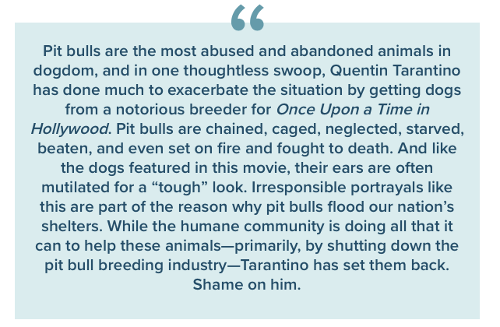
Without conscious effort, Brandy’s loaded characterisation is easily overlooked; Tarantino disarms the spectator’s critical faculties with his sympathetic portrayal of the dog, and her presence in Once Upon a Time is not merely enjoyable but a highlight. In the diegetic realm of the film, Brandy – via continuity editing and expressive close ups – becomes a highly anthropomorphised, active, reactive and integral presence. Tarantino is thus working towards – indeed counting on – spectator alignment with her character, which is furthered by the use of point of view shots, and sympathetic, low angle tracking shots which position us spatially with Brandy. Simultaneously, Brandy also serves to amplify the humanity of her owner, Cliff Booth, which spectators may otherwise struggle to identify without his soft spot for dogs. And yet, Brandy’s very nature as a Pit Bull outside of the film world somewhat undoes the work done by Tarantino; audience’s fondness of Cliff and Brandy is tainted by imagery of a stern trainer and violent animal.
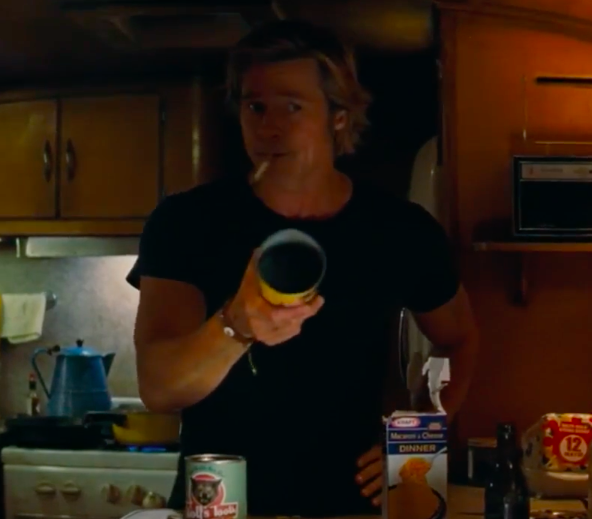
Fig. 6 – POV shot of Cliff lecturing Brandy. Screen capture. 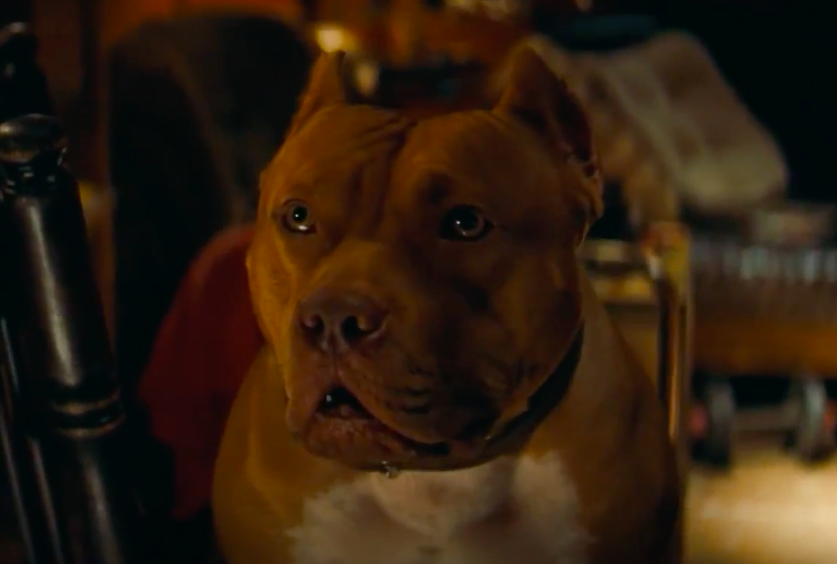
Fig. 7 – Close up shot of Brandy conversing with her owner. Screen capture.
Whether or not Tarantino, through his affectionate characterisation of Brandy, aims to reconfigure ideas of the Pit Bull as more obedient, faithful and lovable remains unclear. More likely, Brandy is one of the many nostalgic tropes implanted into his homage to cinema, a nostalgic nod back to the pioneering canine stars of old – Rin Tin Tin[10], Lassie[11] and Old Yeller[12] come to mind. The director’s interest in animal wellbeing is stated clearly in the above interview with Animal Humane, and it is unlikely he consciously intended to further perpetuate stereotypes of Pit Bulls, though nonetheless he fails to recognise the implications his casting may have had. While Brandy’s performance as an actor, Cliff’s nice-guy wit, and perpetual stereotyping of Pit Bulls may all three be illusory, one thing regarding this animal’s representation in film remains real: Brandy and the three delightful Pit Bulls that star in Once Upon a Time… In Hollywood are adored by their director, handlers, co-stars, critics and audiences alike.
References:
[1] Alex Ritman and Ronda Richford, “Quentin Tarantino Collects Palm Dog Award For ‘Once Upon A Time In Hollywood’ Pit Bull”, The Hollywood Reporter, 2019 <https://www.hollywoodreporter.com/news/quentin-tarantino-accepts-palm-dog-once-a-time-hollywood-1213463> [Accessed 20 May 2020].
[2] Murray Pomerance, “Animal Actors”, 1st edn (Detroit: Thomson Gale, 2006), pp. 81.
[3] McLean, Adrienne L., Cinematic Canines: Dogs and Their Work in the Fiction Film (Rutgers University Press, 2014) ProQuest Ebook Central, <https://ebookcentral.proquest.com/lib/sheffield/detail.action?docID=1651774>, pp. 16.
[4] Quentin Tarantino, Django Unchained (Hollywod: A Brand Apart, Columbia Pictures, 2012).
[5] American Humane, Award Winning Director Quentin Tarantino Is A Huge Fan Of American Humane Association, 2013 <https://www.youtube.com/watch?v=mVrK5T_k4lA&feature=youtu.be> [Accessed 21 May 2020].
[6] Jonathan Burt, Animals in Film (London: Reaktion Books Ltd 2002), p.g. 11
[7] Linda S. Weiss, “Breed-Specific Legislation In The United States | Animal Legal & Historical Center”, Animallaw.Info, 2020 <https://www.animallaw.info/article/breed-specific-legislation-united-states> [Accessed 23 May 2020].
[8] Jaime Clevenger and Philip H. Kass, “Determinants Of Adoption And Euthanasia Of Shelter Dogs Spayed Or Neutered In The University Of California Veterinary Student Surgery Program Compared To Other Shelter Dogs”, Journal Of Veterinary Medical Education, 30.4 (2003), 372-378 <https://doi.org/10.3138/jvme.30.4.372>.
[9] Daphna Nachminovitch, “PETA Statement: Dog Used In Quentin Tarantino’s ‘Once Upon A Time In Hollywood’ | PETA”, PETA, 2019 <https://www.peta.org/media/news-releases/peta-statement-dog-used-in-quentin-tarantinos-once-upon-a-time-in-hollywood/> [Accessed 24 May 2020].
[10] Robert G. Walker and William Beaudine, The Adventures Of Rin Tin Tin (Culver City, California: Screen Gems, 1954).
[11] Robert Maxwell, Lassie (California: Robert Maxwell Associates, 1954).
[12] Robert Stevenson, Old Yeller (Burbank, California: Walt Disney Productions, 1957).
Filmography
Tarantino, Quentin, Once Upon a Time… in Hollywood (Hollywood: Columbia Pictures, 2019)
Further Reading
Books:
Lawrence, M., & Laura McMahon (Eds.) Animal Life and the Moving Image (London: British Film Institute 2015) – for a broader look at animals in film, from Buñuel to Hitchcock.
Journals:
Collier, Stephen, “Breed Specific Legislation and the Pit Bull Terrier: Are the Laws Justified?”, Journal of Veterinary Behaviour: Clinical Applications and Research,1 (2006), pp. 17-22. – for an insightful cross-examination of laws and stereotypes against Pit Bull breeds. Collier presents evidence to dispute the reputation of Pit Bulls.
Hoffman, Christy L., Natalie Harrison, London Wolff & Carri Westgarth, “Is That Dog a Pit Bull? A Cross-Country Comparison of Perceptions of Shelter Workers Regarding Breed Identification”, Journal of Applied Animal Welfare Science, 17:4 (2014), pp. 322-339 <https://doi.org/10.1080/10888705.2014.895904>. – an insight into the classification of Pit Bulls in animal shelters, noting how workers decide whether a dog will be euthanised. A silver lining is offered in the authors’ conclusion that many shelters will falsely misidentify Pit Bulls so that they can be re-homed instead of euthanised.
Rodarte‐Almeida, A.C.V., Petersen‐Jones, Simon Petersen-Jones, Ingeborg M. Langohr, Laurence Occelli, Peterson T. Dornbusch, Naoye Shiokawa and Fabiano Montiani-Ferreira, “Retinal Dysplasia in American Pit Bull Terriers – Phenotypic Characterization and Breeding Study”, Vet Ophthalmol, 19 (2016), 11-21. <doi:10.1111/vop.12243> – an example study of genetic defects in Pit Bull Terriers
Videos:
Official Home of Brad Pitts Brandy Dog, Once Upon A Time In Hollywoods Brandy Aka Sayuri & Stunt Double Brandy Aka Cerberus Update, 2019 <https://youtu.be/uD-Eu0vihME> – for the official YouTube home of Brandy’s trainers.
Official Home of Brad Pitts Brandy dog, Brandy The Pittbull Pre Once Upon A Time In Hollywood Movie Training Www.Delawareredpitbulls.Com, 2019 <https://youtu.be/iNcyQaxeG7w> – for a look at the training involved in Once Upon a Time… in Hollywood.
Web Articles:
Cormier, Ryan, “Meet The Precious Pit Bull Starring As Brad Pitt’s Dog In ‘Once Upon A Time In Hollywood’”, Eu.Usatoday.Com, 2019 <https://eu.usatoday.com/story/entertainment/movies/2019/07/26/brad-pitts-adorable-dog-steals-once-upon-time-hollywood/1841254001/> [Accessed 23 May 2020] – for more information about Brandy’s breeders and how they became involved with the film.
Han, Karen, “The Tricks To Making Quentin Tarantino’s Once Upon A Time In Hollywood Look Vintage”, Polygon, 2019 <https://www.polygon.com/2019/8/3/20729701/once-upon-a-time-in-hollywood-1960s-robert-richardson> [Accessed 20 May 2020] – an interview with Tarantino’s cinematographer Robert Richardson, explaining how Once Upon a Time… in Hollywood was made to look vintage.
Wheeler, Brian, “Can Hollywood’s Top Dogs Really Act?”, BBC News, 2012 <https://www.bbc.co.uk/news/magazine-16467852> [Accessed 23 May 2020] – for a discussion of canine performances and awards.